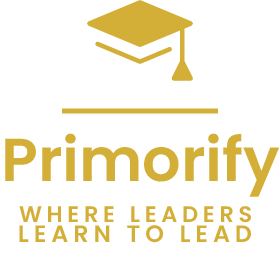The Tech Leader Blueprint™ Blog


Why Should Tech Professionals Embrace Strategic Thinking In Leadership Roles?
Why Should Tech Professionals Embrace Strategic Thinking In Leadership Roles?
Leadership is more than just managing projects; it requires strategic thinking to navigate the fast-paced tech landscape effectively. By fostering this mindset, you can enhance your decision-making capabilities, align your team's objectives with broader company goals, and drive innovation. Embracing strategic thinking not only positions you as a forward-thinking leader but also minimizes the risk of short-sighted decisions that could harm your organization. Ultimately, it empowers you to inspire and guide your team towards achieving long-term success.
Key Takeaways:
Strategic thinking enables tech professionals to align their teams with organizational goals, ensuring that technology initiatives support broader business objectives.
By fostering a strategic mindset, leaders can better anticipate market trends, adapt to changing conditions, and drive innovation within their teams.
Embracing strategic thinking enhances decision-making processes, allowing tech leaders to prioritize projects effectively and manage resources more efficiently.
Types of Strategic Thinking
A strategic thinker employs various approaches to problem-solving and decision-making. The main types you can embrace include:

This variety of thinking styles can enhance your effectiveness as a leader.
Analytical Thinking
If you apply analytical thinking, you will systematically evaluate data and information to make informed decisions. This method empowers you to dissect complex issues, identifying core components and relationships that might lead to effective solutions.
Creative Thinking
Now, you can harness creative thinking to explore innovative solutions that can distinguish your leadership style. By incorporating this approach, you are more likely to challenge traditional norms and foster a culture of innovation within your team.
With creative thinking at your disposal, you open the door to fresh perspectives and original ideas. This kind of innovative approach encourages experimentation, allowing you to devise unique solutions that can address even the most challenging problems your team encounters. By embracing this mindset, you can foster an environment where your colleagues feel confident in sharing their own creative ideas.
Systems Thinking
With systems thinking, you gain insights into how different components within an organization interrelate. This holistic view enables you to analyze how changes in one area can impact overall performance.
Creative integration of systems thinking allows you to visualize the organization as a cohesive unit rather than as isolated parts. Emphasizing the interconnectedness of your team members' roles fosters better communication and collaboration, leading to improved project outcomes. Additionally, you can use this approach to identify underlying patterns, enabling proactive adjustments to maintain efficiency and align your organization's goals with its broader mission.
Tips for Developing Strategic Thinking Skills
There's a variety of ways you can enhance your strategic thinking skills. Consider the following tips:
Engage in critical thinking exercises
Seek feedback on your decisions
Stay informed about industry trends
Set aside time for reflection
Develop a more holistic perspective
The integration of these practices can significantly enhance your leadership capabilities.
Continuous Learning
There's a vast landscape of knowledge that you can tap into through continuous learning. Embrace new technologies, methodologies, and frameworks relevant to your field. Attend workshops, enroll in online courses, and read industry-related materials to keep your knowledge up to date. This ongoing education empowers you to approach challenges with an informed perspective and fosters innovative problem-solving skills.
Networking and Collaboration
Continuous engagement with peers and mentors in your industry can enhance your strategic thinking. Networking allows you to share insights, gain different perspectives, and form partnerships that can drive your team’s vision forward. Collaborating across various disciplines broadens your cognitive toolkit, enabling you to leverage diverse viewpoints and experiences in decision-making. This not only enriches your own understanding but can lead to innovative solutions to complex challenges.
Strategic collaborations are invaluable in today’s interconnected landscape. Developing strong networks enhances your access to resources, insights, and opportunities. Actively participate in industry conferences, workshops, and forums to expand your connections. Join online communities where you can share ideas and identify emerging trends. Keep in mind that building relationships takes time and effort, but such engagement fosters a supportive environment that significantly impacts your leadership journey.
Step-by-Step Approach to Strategic Thinking
After establishing your leadership role, embracing a step-by-step approach to strategic thinking can significantly enhance your effectiveness. The following table outlines key steps:

Identify Goals and Objectives
Some of the first steps in strategic thinking involve clearly identifying your goals and objectives. Establishing a focused vision helps you align your strategies with desired outcomes, ensuring that your efforts in leadership lead towards measurable success.
Conduct SWOT Analysis
Any effective strategic plan begins with a thorough SWOT analysis. This process enables you to evaluate your current position by recognizing internal strengths and weaknesses, while also exploring external opportunities and threats. This comprehensive view guides your strategic decisions and fosters informed planning.
Another important aspect of conducting a SWOT analysis is understanding its implications for your strategy. By identifying inherent strengths, you can leverage them for maximizing opportunities, whereas recognizing weaknesses allows for targeted improvements. Likewise, recognizing potential threats equips you to mitigate risks effectively.
Craft a Strategic Plan
On crafting a strategic plan, you translate your identified goals and insights from your SWOT analysis into specific, actionable steps. This plan serves as a guide for you in executing your strategy, ensuring you stay aligned with your vision while adapting to dynamic environments.
To create an effective strategic plan, prioritize your goals and outline specific initiatives that address your SWOT findings. Establish measurable milestones to evaluate progress, and be prepared to pivot as necessary. With a clear roadmap, you empower yourself and your team to work cohesively towards success.
Key Factors Influencing Strategic Thinking in Leadership
Once again, strategic thinking in leadership roles is shaped by several key factors, which include:
Organizational Culture
Leadership Style
External Environment
Team Dynamics
Thou should not underestimate the influence of these elements on your effectiveness as a leader.
Organizational Culture
On the path to strategic thinking, the organizational culture plays a vital role, as it affects how your team approaches decision-making and innovation. A culture that promotes open communication and risk-taking encourages you to think strategically, enabling collaboration and collective vision.
Leadership Style
To enhance your strategic thinking, your leadership style must align with the needs of the organization and its people. Adopting a participative or transformational style fosters inclusivity and creative solutions, inspiring your team to engage fully in the strategic process.
Understanding your leadership style is necessary for effective strategic thinking. If you lean towards a more authoritarian approach, it may stifle your team's creativity, causing them to feel disengaged. Embracing a collaborative leadership style stimulates innovation and empowers your team to contribute actively. Leveraging a transformational leadership approach allows you to inspire and motivate your team, leading to a more dynamic environment where strategic thinking thrives. Be mindful of the negative impacts of rigid leadership styles, as they can hinder the exchange of ideas and limit potential breakthroughs.
Pros and Cons of Strategic Thinking in Leadership Roles
Unlike traditional management approaches, strategic thinking in leadership encompasses both strengths and weaknesses. It’s necessary to weigh these factors carefully to harness the benefits while mitigating the drawbacks. Below is a breakdown of the pros and cons of strategic thinking in leadership roles:

Advantages
Roles within strategic thinking help you foster a forward-thinking environment, encouraging innovative problem-solving. This enhances decision-making and promotes long-term planning. Additionally, by improving adaptability, you can align resources effectively and strengthen team collaboration, allowing for a more cohesive approach to achieving organizational goals.
Disadvantages
Any form of strategic thinking can present challenges. Often, you might find that the strategic planning process is time-consuming, leading to analysis paralysis where too much information stifles action. A focus on data can sometimes result in a disconnect from real-world dynamics, and you may face resistance to change from team members. Furthermore, over-reliance on strategic frameworks can lead to unrealistic expectations regarding outcomes and timelines.
To effectively manage these challenges, it’s important to maintain a balance between strategic goals and the operational realities your team faces. If you are overly focused on the theories, you risk distancing yourself from practical issues that might require immediate attention. The key is to ensure that strategic thinking enhances your leadership without trapping you in endless planning cycles, keeping your team engaged and ready to adapt to change.
Summing up
Ultimately, embracing strategic thinking in your leadership role as a tech professional allows you to navigate the complexities of the ever-evolving technology landscape effectively. By developing this mindset, you can align your team's efforts with organizational goals, anticipate future trends, and make informed decisions that drive innovation and success. As you enhance your strategic skills, you not only improve your own leadership effectiveness but also empower your team to operate with greater clarity and purpose, fostering a culture of proactive problem-solving and adaptability.
FAQ
Q: What does it mean for tech professionals to embrace strategic thinking in leadership roles?
A: Embracing strategic thinking in leadership roles means that tech professionals must focus on long-term goals, making informed decisions that align with the organization's vision and mission. It involves analyzing market trends, understanding customer needs, and anticipating potential challenges. By incorporating strategic thinking, tech leaders can create innovative solutions, guide their teams effectively, and contribute to the overall success of their organization.
Q: How can strategic thinking enhance decision-making for tech leaders?
A: Strategic thinking enhances decision-making by enabling tech leaders to evaluate various scenarios and consider different perspectives before making a choice. This approach ensures that decisions are not only based on immediate results but also take into account the future implications and opportunities. By analyzing data, assessing risks, and involving team members in the brainstorming process, tech leaders can make well-rounded decisions that benefit both their teams and the company as a whole.
Q: What role does strategic thinking play in team development and motivation in tech environments?
A: Strategic thinking plays a significant role in team development and motivation as it fosters a shared vision among team members. When leaders articulate a clear strategy and involve their teams in the planning process, employees feel more engaged and valued. This sense of ownership can enhance motivation and productivity. Additionally, by focusing on long-term goals and providing opportunities for professional growth, tech leaders can nurture talent, which can lead to higher retention rates and a more innovative workplace culture.
© 2025 Primorify - All rights reserved
Disclaimer
This site and our services are not affiliated with or endorsed by Facebook, Instagram, TikTok, LinkedIn, YouTube, or Twitter. Additionally, we are not sponsored by, endorsed by, or otherwise connected with these platforms. All associated trademarks belong to their respective owners.
Earnings Disclaimer
We do not promote "get rich quick" schemes. We believe in hard work, adding genuine value, building a professional career, and serving others with excellence and consistency. Success in our programs requires effort, discipline, and dedication, similar to any other professional development or continuing education program.
While we may get to know you personally through our coaching program and provide tailored guidance based on your unique circumstances, we cannot and do not guarantee specific results or earnings. Your success ultimately depends on your skills, effort, and commitment to implementing the strategies we provide.
Our goal is to provide high-quality educational content, practical strategies, and personalized support to help you achieve your goals. Please note that all products, services, and content offered by our company are for informational and educational purposes only. Nothing on this site, in our materials, or within our curriculum constitutes a promise of results, income, or future success.
Furthermore, we do not offer legal, medical, tax, or other professional advice. Always consult with a licensed professional for specific guidance in these areas.

